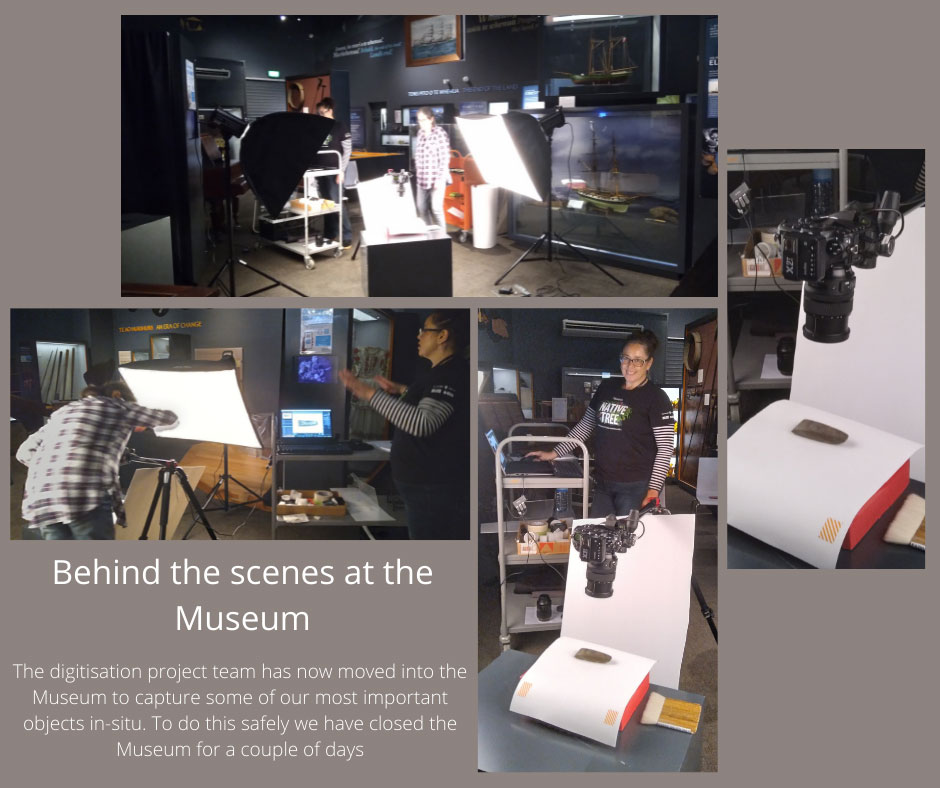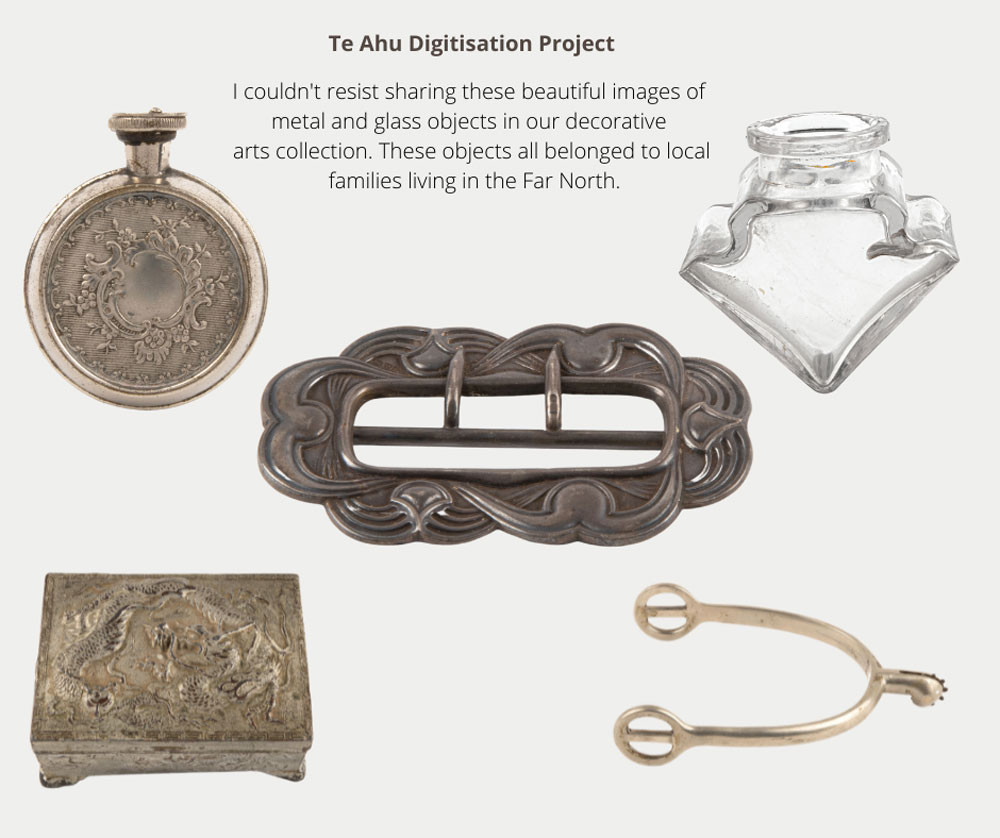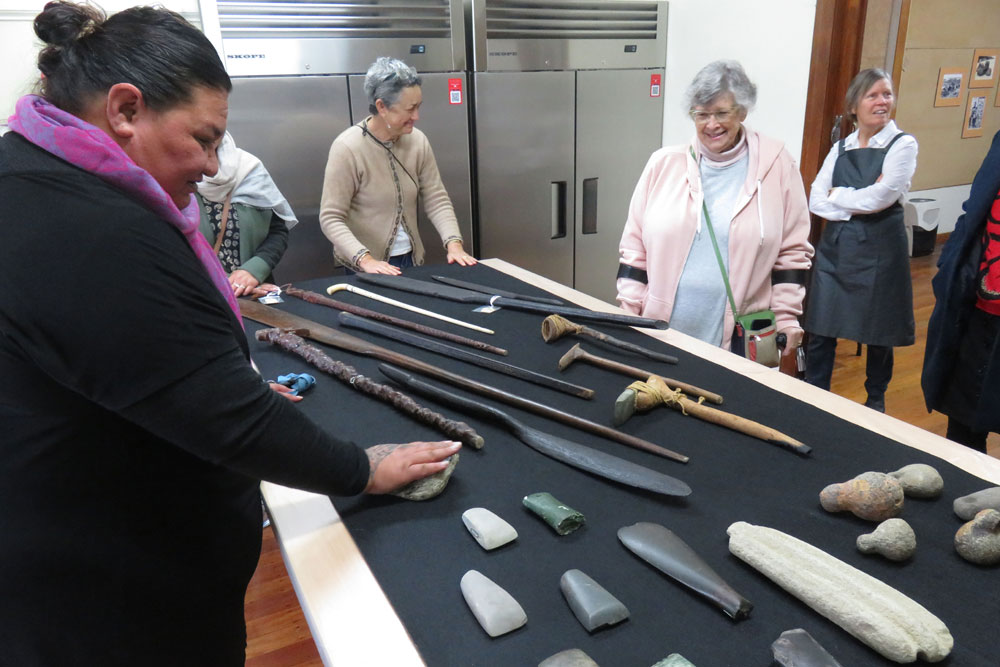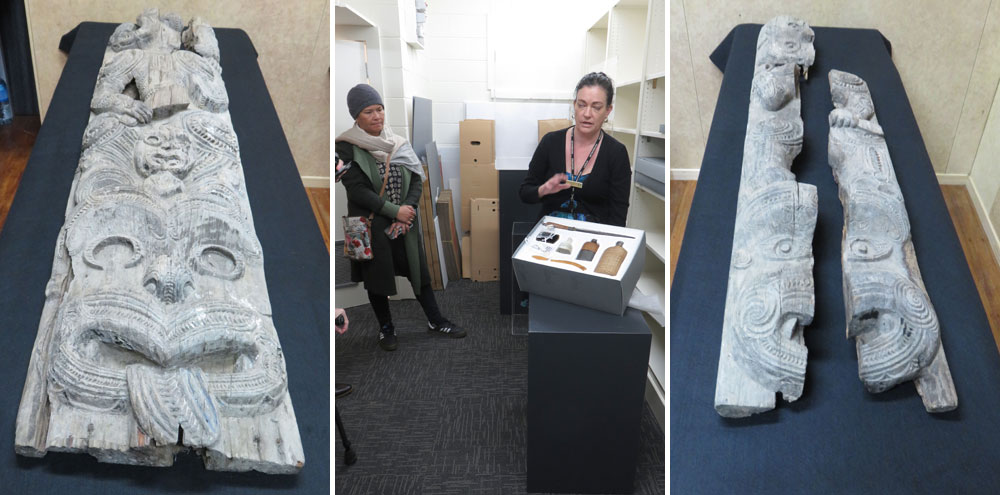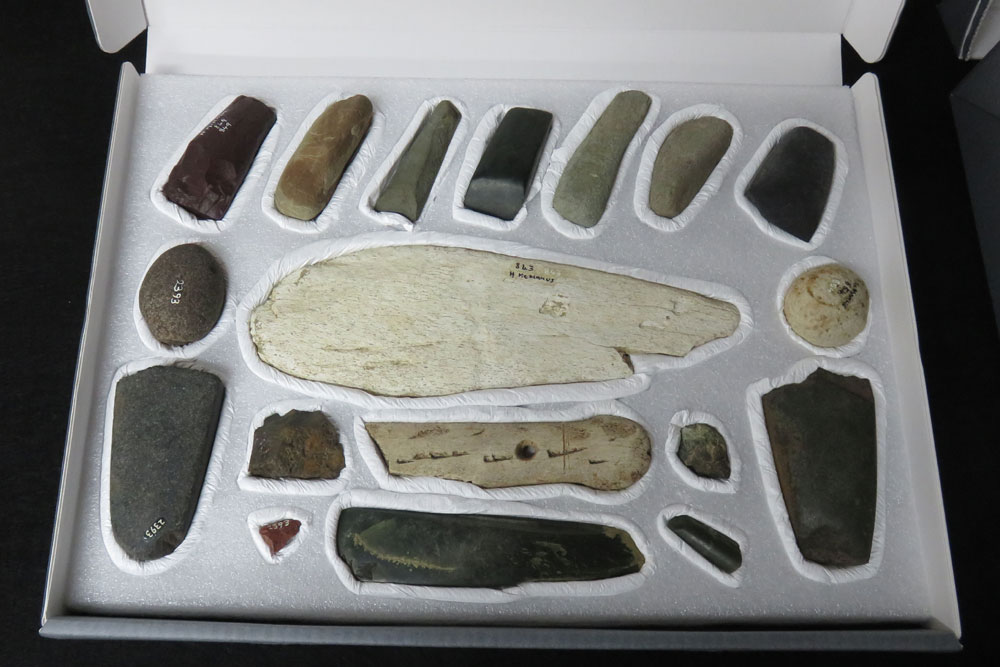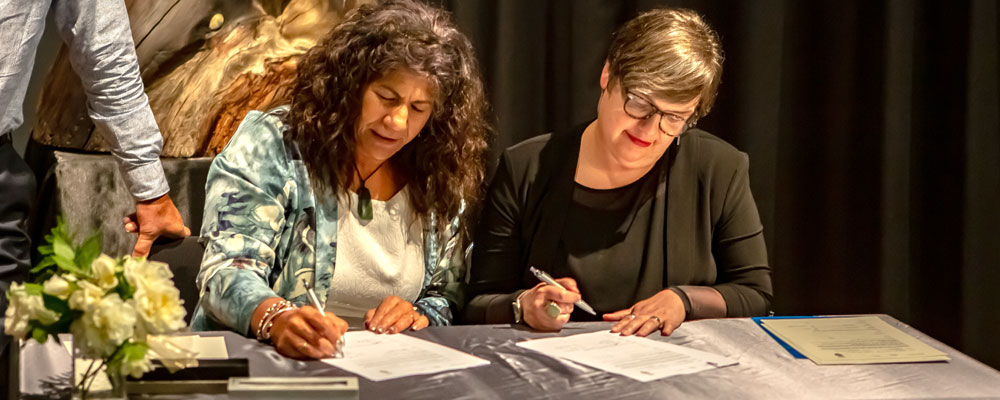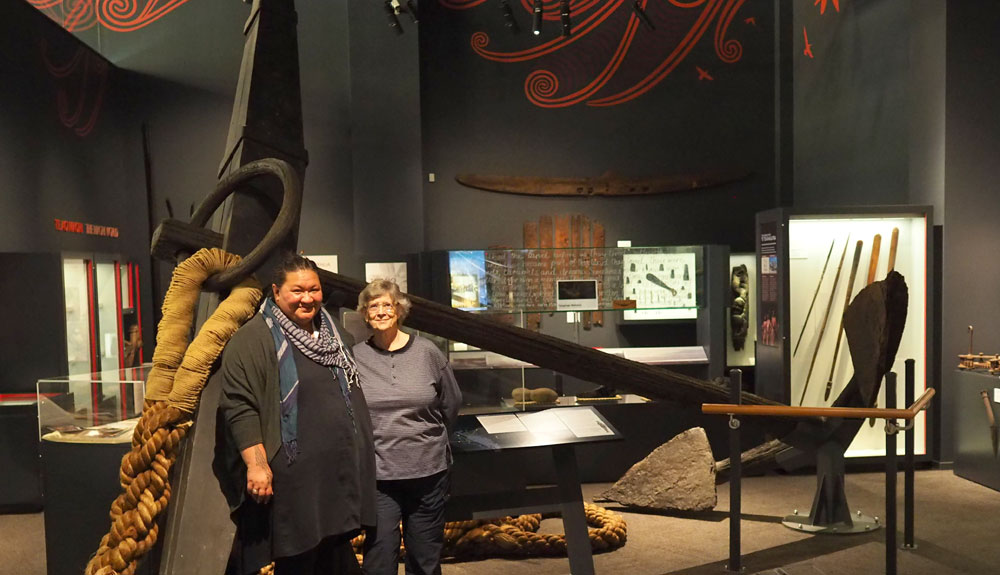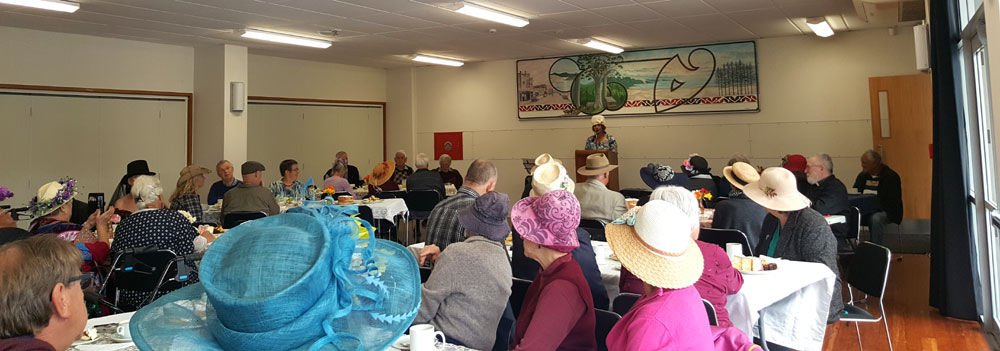News
NEW EXHIBITION: CABINET OF CURIOSITY
From 17 January 2022
There is a great new exhibition coming to Museum @ Te Ahu.: It is called Cabinets of Curiosity, which features six new cases within the Museum, Te Ahu Centre and Library, displaying some of the quirkier objects from the Museum collections. Some of the labels attached to the objects are true, some are false but which is which? Is the Hamster Trainer & Feeder really what is says and do we actually have some Moa Coprolite (fossilised faeces) or Prototype Frisbees in the collection?
Come to the Museum after the 17th and find out.
BEHIND THE SCENES AT THE MUSEUM
October 2021
Our digitisation project continues.
TAONGA TOUR
Wednesday, 7 July 2021
By Sarah Wale
Museum @ Te Ahu has been celebrating Matariki with several exhibitions, talks and activities. A highlight of the week was the Taonga Tour when members of the public were invited to go behind the scenes to the museum’s storage areas in Pioneer House and The Sanctuary. Here they were shown a wealth of taonga, artefacts and curios. The tours were conducted by the Museum Curator, Whina te Whiu and Museum Assistant Mary Daun with the help of volunteers Olive Smart, Nicola Goldswain and Helen Yuretich.
I was lucky enough to be able to join one group and to hear the stories of some of these precious taonga and to feel the passion and obvious love for their work from those who told us about them, was truly moving. To see Whina hold her hand over a piece of pounamu (greenstone) was to feel an almost tangible connection between them. There is little greenstone in Tai Tokerau but it was brought up from the South Island, in exchange for obsidian, which is found only up here and was mined in the Kaeo area. Tools made of obsidian were found to be the best material to cut and carve the pounamu but as it is not found in the South, the trade was established.
We were told, for example, of the early manufacture of linen, the Maori people of Tai Tokerau being at one time the largest producers of the cloth, and its export to the Islands was accomplished by sea voyage in large waka. The earliest Maori flag was developed because of this trade as it was necessary to fly a national flag when entering a foreign port.
A large collection of carved sticks and hand-made tools came to life as their use was explained. There were traditional rakau korero (‘talking sticks’) and European-style walking sticks, the former never being allowed to touch the ground and being used for formal and ceremonial occasions to endow the holder with mana. The sticks were mainly carved from different woods but one of the more delicate walking sticks was made of what appeared to be ivory or, as one member of the group suggested, a narwhal tusk.
We were given the opportunity to handle some of the tools, including an elegant oar, used to propel the one-man waka tete, described as the ‘speed boat’ of its time. We also held adzes, spades, and clubs for pounding flax as well as several greenstone mere. This hands-on experience brought us closer to those who had handled them before and we were able to imagine how life must have been in those days. A very special delicate whalebone patu was definitely not to be handled, however, being extremely brittle and very precious, as not many of its kind survive.
The piece that was clearly a favourite was a beautifully and intricately carved pou, found hidden in the back of an old barn. The style of carving showed that it was some 200 years old and originally came from the East Cape. We don’t know where exactly but a Curator must also be a detective; Whina is an excellent one and she is working with other museums to see if she can find the pou’s home. When she does, arrangements will be made to take it back to where it belongs. While she is doing that, she is also enquiring about any pieces from our area which may have found their way to other parts and might be brought back to their roots. Museums are not just about collecting sundry objects and hanging on to them. Discovering provenance and ensuring taonga are in their rightful place is an important part of their tikanga and mahi, ethos and duties.
There is so much more to see, including such mundane but important objects as typewriters (or ‘early computers’ as one young visitor excitedly reported to her father when she typed a few words on the paper that had been rolled into the machine), sewing machines, even ladies’ portable writing desks, possibly used on the long voyage from Europe in the early days.
The final talk of the tour took place in the Sanctuary Archive and was given by Mary, whose passion is conservation. She told us about the way artefacts are cleaned very carefully and then stored. We were shown the special acid-free materials, paper, ribbon, foam and stout cardboard boxes used to hold and protect smaller items. Everything, regardless of its intrinsic value, is treated with the same care and respect.
Although the taonga we saw are in storage, as all museums hold far more treasures than can ever be on display at one time, there are many similar examples on display in the Museum itself. If you haven’t already discovered the secrets of this wonderful space full of history, I urge you to go to Te Ahu and spend some time there. You will be made very welcome and the staff and volunteers will be happy to show you round and answer your questions.
MUSEUM STRATEGY DAY
Monday, 16 November 2020
Last Wednesday we had a full house of communities of interest (Iwi, education, researchers, other museums, trust and council) helping us to set a new direction for the museum.
The Pioneer House project is completed, with a stable storage space and taonga cleaned and rehoused. An online cataloguing project is happening right now, with upcoming digitization leading to an accessible visual record. We are taking another huge leap forward!
This phase of the journey will position the Museum@Te Ahu in the forefront as an effective, resilient and adaptable museum. It will need many paddlers on board the waka, all paddling the same way.
This was all made possible with the help of the recent Museums Hardship Fund administered by Te Papa's - Te Paerangi National Services.
Next month, the draft strategic plan will go out for four weeks consultation.
Thank you to everyone who participated, your contribution was invaluable.
Nga mihi mahana,
Whina Te Whiu - Curator
COVID-19 Alert Level 1 guidelines for our museum.
Monday, 21 September 2020
The Museum returned to Level 1 from Tuesday, 22 September 2020. This means that most restrictions that have been in place have been removed:
Larger groups are welcome.
School visits resume.
Access is available to the archives for research.
Visitors don't need to contact trace, but we have left the QR codes up.
Welcome back, everyone!
Nga manaakitanga,
Whina Te Whiu - Curator
COVID-19 Alert Level 2 guidelines for our museum
Wednesday, 12 August 2020
For visitors to the museum a contact tracing register is in place.
Maximum of 5 people at one time in the museum keeping to the 2m social distancing rule. Hand sanitiser is available.
Until further notice group bookings including school and research programmes are postponed.
Unfortunately there is no public access to Archives at this time as we cannot monitor social distancing in this space. However, you can still email staff and we can conduct the research on your behalf.
If you have any questions concerning our museum's approach to level 2 please do not hesitate to make contact with us .
Take care and keep well everyone.
Nga manaakitanga,
Whina Te Whiu - Curator
Covid-19 Alert Level 1 update for our museum. From June 9th, we resumed business as usual services.
Tuesday, 9 June 2020
Public programmes including class visits, events and research bookings are returning over the next fortnight, updates will be made on our Facebook page .
We continue to keep our museum extra clean and provide hand sanitiser for customer use. If you are unwell, please don't visit the museum.
Self-managed contact tracing is encouraged, keep your own personal record or use the Ministry of Health’s NZ COVID Tracer app available here: tracing.covid19
We are so proud of our country and the Far North region, and our collective resilience during these unusual times of Covid-19.
Museum COVID-19 Winter Opening
Wednesday, 28 May 2020
The Museum will be changing to full winter opening hours from Tuesday, June 2nd. These are Monday-Friday, 10.30pm - 4.30pm. We have assessed that the risk of Covid-19 has reduced with:
- Few to no new national cases over a week
- active cases in Northland for over 30 days
- No known community spread
We have also consulted Museum re-opening at Level 2 guidelines from Local Government New Zealand in making this decision. All visitors to the Museum will still be required to contact trace and practice social distancing. Research will continue to be virtual, rather than face-to-face. Volunteers will return to support contact tracing and customer entry. Cleaning of public spaces will continue.
If the spread of Covid-19 increases again, we will revert to restricted entry. The threshold for this will be:
- A new case in Northland
- 5 or more new national cases on consecutive days
- Identified community spread
We look forward to welcoming you to your Museum!
Museum at Alert Level 2 - Reopens Monday 27 May 2020: 10am - 2pm
Wednesday, 13 May 2020
TENA KOUTOU KATOA
With the latest NZ Government announcement that New Zealand will move to Alert Level 2 at 11.59pm on Wednesday 13 May.
We'd like to thank you for sticking with us, staying connected with the museum online. We are happy to announce that the Museum will be re-opening to the public in three weeks time from Monday, 27 May.
This decision hasn't been made lightly and we wanted to provide some visibility on the museum activities behind the scenes, and getting the museum ready for Level 2.
THIS WEEK (11-15 MAY)
- We remain closed as we focus on our museum
collections:
The museum has been closed for a long time, and so it's important we conduct
a condition report and an audit of the Museum's collection. We see this,
as a high priority.
NEXT WEEK (18-22 MAY)
- We remain closed as we focus on the exhibition
areas and public spaces:
Our staff, will be "swapping out" artefacts\taonga that are not
secured, those taonga that can be easily touched by the public will be replaced
with artefacts that can go into our display cases.
Artefacts fixed to the walls the taonga Maori, will be covered with tyvek(protective material) and black cloth. Laid to rest during level 2.
Artefacts that are fixed to the floor or are too big to move will have signage asking the public to "Please do not touch", this is for the DeSurville Anchor, the Gum Digger tools; and the piano will be moved onto the stage.
Wiping these taonga down daily during level 2 restrictions is not an option for the long term preservation, cultural care and the historical value of these taonga.
Digital displays and PCs will remain off during level 2.
Furniture will be removed from the museums' public spaces.
WEEK THREE (beginning Monday 25 May) - Museum reopens to the public. Open 10am - 2pm, Monday to Friday level 2.
There are key protocols for returning to work and these are derived from the NZ Government Level 2 guidelines:
- Contact tracing register in place - mandatory.
- Maximum of 5 people at one time in the museum keeping to the 2m social distancing rule.
- Hand sanitiser available.
- No group bookings including school visits.
- No programmes.
- No public access to Archives - we cannot monitor social distancing in this space.
- No volunteers during level 2 - issue of social distancing in the office space.
Our staff will be wiping down display cabinets and cases daily and is part of our closing procedures.
If you have any questions concerning our museums' approach to level 2 please do not hesitate to make contact with us.
It's been a long time since our doors were open. And, we can't wait to see you all again soon. Thanks everyone, for understanding the situation during this time.
No reira, ka nui te mihi ki a koutou katoa
Ka kite ano
Whina Te Whiu
Curator
FAQs - Museum and Covid-19
Friday, 20 March 2020
What is the museum doing to help prevent the spread of Covid-19?
We are doing a number of things including:
- Encouraging anyone who is feeling unwell to remain at home.
- Cancelling all public programmes, events and meeting room bookings.
- Practising social/physical distancing.
- Extra hand and surface cleaning procedures.
- Encouraging people to access the museums online research facility.
Why do we have to stand back while greeting people into the museum?
We are practising social/physical distancing, maintaining a safe space between people - about 2m. This helps stop the virus being passed by cough or sneeze.
Why have you cancelled public programmes?
We are trying to limit contact between groups of people.
Can I come into the museum if I’m sick?
No, if you are unwell we urge you to stay away.
Is the museum going to close?
Far North District Council is constantly reviewing the status of all public facing sites in relation to the Covid-19 virus and will announce any changes. We will update customers on our website and Facebook page.
Can I still come to the museum to research the archives?
No, we have restricted our research services and we will not be taking any bookings at this time. We are encouraging people to use the online forms on our website for research,
We have waived the first hour of research.
Is the museum overreacting?
We believe not, we are following Ministry of Health guidelines and doing what is best for our communities. Our thinking is that we would rather act too early than too late.
In summary:
- Every decision we make is with our community in mind.
- We believe it is important that we act early to stop the spread.
- We are paying close attention to the Covid-19 situation and doing everything we can to follow guidelines set by the Ministry of Health.
- We're adding more frequent cleaning to counters, computer equipment, EFTPOS machines and other high volume touch points.
- We care about our community and are doing our best to keep people safe.
- We believe in being kind to one another during this uncertain time.
- We are practising social distancing – staying about 2m away from others.
Reference websites
NZ Government Covid-19 Website
2019 sees the Golden Jubilee of our Museum
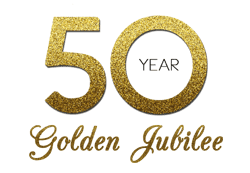
Saturday, 9 November 2019
Gifting of de Surville anchor 'huge honour' for Te Ahu
From 14 November 2019 issue of Northland Age by Peter de Graaf
New Zealand's oldest known European relic has been formally handed over to Museum @ Te Ahu in a move which could pave the way for the return of more historic artifacts linked to the Far North. The Surville anchor - abandoned in a storm off Tokerau Beach by the French explorer Jean-Francois-Marie de Surville in December 1769 - has been displayed at the Far North Regional Museum, and more recently at Te Ahu, since it was found in 1974. However, it remained the property of Te Papa in Wellington and was only on loan to Kaitaia.
That changed on Saturday 9th November when officials from Te Papa travelled north to sign a Deed of Gift transferring ownership of the anchor to Museum @ Te Ahu. Trustee Sarah Wale said the anchor was one of three cut loose from de Surville's ship during a violent storm. All three were found by divers Kelly Tarlton and Mike Bearsley. One went to Te Papa, one was loaned to Kaitaia and third was left behind as "a gift to the sea". Wale said the anchor was almost certainly the oldest European object found in New Zealand, but was also significant because of its link to some of the earliest interactions between Māori and Europeans.
The gifting of the anchor was ''a huge honour'' and the result of 18 months of behind-the-scenes work by curator Whina Te Whiu and museum trust chairwoman Bronwyn Bauer-Hunt. "It's not unprecedented, but it is very rare for something of this significance to be gifted to a regional museum," Wale said. On a day-to-day basis it would make little difference who owned the anchor, but it was a major boost to the museum's standing and mana. It also meant Te Papa officials, who Wale said had been impressed by the museum and the handover ceremony, would be more inclined to give objects to Museum @ Te Ahu in future.
Te Whiu said she now planned to request artefacts from the Ventnor, which sank off Hokianga Heads in 1902, for Te Ahu's maritime collection, where she believed they belonged. The Surville anchor weighs close to a tonne and is so large it had to be installed in Te Ahu before the last wall was built. While there's no doubting the anchor's significance, the memories it evokes for Doubtless Bay Māori are far from happy.
Ngāti Kahu chief executive Anahera Herbert-Graves said oral history told of cordial relations when de Surville first called in to Tokerau to replenish his vessel in December 1769. Chief Ranginui and his people traded with the French, supplied them with food and showed them where to find timber to carry out repairs. ''At one point a dinghy came loose and floated ashore so Ranginui claimed it under tikanga. Arrogantly assuming some kind of authority, they [de Surville's men] came and arrested Ranginui, ordered the destruction of his house and basically kidnapped him. He was never heard from again.'' It was only a century later that researchers studying the ship's logs learnt Ranginui had died, probably of scurvy, three months later. He was thought to have been buried at sea. 'So we have no fond memories of de Surville. The anchor is an amazing relic, we have no problem with people who want to see it and be amazed by it. But we do want to point out the deeper stories behind it and make sure they are told,'' Herbert-Graves said.
As well as Te Papa representatives and museum trustees, Saturday's handover ceremony was attended by Mayor John Carter, councillor Mate Radich and Te Hiku Community Board chairwoman Adele Gardner. Abe Witana was the MC.
Tuesday, 17 September 2019
Far North Regional Museum Trust hosted the museum's jubilee morning celebrations and it was a wonderful affair full with laughter, tea, cakes and memorable hats.
Masters of Ceremony, and trust chair, Bronwyn Bauer-Hunt warmly welcomed everyone to the Te Ahu banquet room and kept the day's programme moving. She was followed by Head of History teacher from Kaitaia College, Rev. Michael Withiel, who offered thanks and prayer.
Guest speakers - Toss Kitchen, Malcolm Matthews, Kay Dragicevich and Robin Shepherd - all shared fond memories of the museum and the region spanning across the 50 years it has been opened, which is officially in December. Thanking museum staff and volunteers past and present.
Robin lit the room up with poetry and song. And each table was buzzing with rich stories of the area; it truly was a treat to sit and listen.
Trust member Sarah Wale judged the hats being worn by most with categories and gave out prizes for the oldest hat: outrageous hat (outfit), best homemade and the most beautiful hat. Meanwhile, Russell Shackleton another trust member and museum volunteer nimbly managed the tea and coffee station.
Prior to the museum opening in 1969, local people gave donations for it's operations. There was a strong belief and support from the community for a museum, and many gave items to fill the museum space too. 50 years later we continue to enjoy the legacy and vision they had for us.
Curator, Whina Te Whiu, said she would like to thank the Far North Regional Museum Trust including those not mentioned above - David Senior, Sean Stratton, John Walsh and David Russell - for their leadership and encouragement.
July 2018: Big win for Museum @ Te Ahu
Museum @ Te Ahu has secured lottery funding for an off-site storage facility, thanks to the Museum Curator, Trustees and Council staff.
The Lottery Environment and Heritage Committee has granted the museum trust $130,000 to establish an environment-controlled archive facility at Pioneer House. The newly refurbished environment will ensure the safe keeping and preservation of the archived heritage collections.
Museum Curator, Whina Te Whiu, says applying for the grant was a collaborative effort, giving effect to the partnership agreement between Council and the Museum Trust signed a little over a year ago. She is now finalising the project plan to deliver the new facility with help from Nina Gobie (FNDC), Museum Assistant, Maraea Broderick, and museum trustees.
July 2019: Nearly there
Since receiving the generous Lottery grant, work on the environment-controlled archive facility at Pioneer House has gone ahead and is now almost complete. The newly refurbished facilities will ensure the safe keeping and optimum conditions for the preservation of the archived heritage collections well into the future.
Museum Curator, Whina Te Whiu, together with specially trained volunteers as well as experts from the wider museum community, including Te Papa, have carried out this painstaking work on time and within the budget. They acknowledge the support of museum staff, Maraea Broderick and Mary Daun, the FNDC and the museum’s Board of Trustees.


